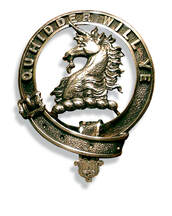Castle Stalker ... Limited Edition Reproduction
Detail images ... click to view |
Each hand-signed and numbered reproduction is printed using archival inks on the finest quality, heavyweight acid free paper.
Included with each print is a hand-signed, embossed certificate of authenticity and the history of Castle Stalker.
This edition will be limited to a maximum of 5000 prints. Framing is not included.
Included with each print is a hand-signed, embossed certificate of authenticity and the history of Castle Stalker.
This edition will be limited to a maximum of 5000 prints. Framing is not included.
|
Click here to order ...
|
|
Castle Stalker ... limited edition print
Click here for details Print size 13" X 19" (image size 11.5" X 18") Shipping included. Please allow time for "Buy Now" page to load ... US $125 plus US$20 shipping |
|
Castle Stalker
Caisteal an Stalcaire in Scottish Gaelic is a four-storey tower house or “keep” located on a small, picturesque tidal islet on Loch Laich, an inlet off Loch Linnhe in Appin, Argyll, Scotland. It is one of the best-preserved medieval tower houses to survive in western Scotland. The name "Stalker" comes from the Gaelic “Stalcaire,” meaning "hunter" or "falconer." Originally, there was a small fort, built around 1320 by Clan MacDougall, who were then Lords of Lorn on the site. After the Stewarts took over the Lordship of Lorn in 1388, it is believed that they completed building the castle we see today during the 1440s. On April 14, 1470, King James III officially granted the lands of Appin to Dugald Stewart, creating what was to become Clan Stewart of Appin. The Appin Stewarts were also known as “The Loyal Clan,” for their steadfast loyalty to their royal Stewart cousins over the next few centuries, through the civil wars and risings. King James IV of Scotland visited the castle and used it as a hunting lodge. The castle has changed hands over the years, most famously when it was lost in a card game around 1620 to the Clan Campbell, thanks to a drunken bet. After the castle changed hands between these clans a couple of times, the Campbells finally abandoned it about 1840, when it lost its roof. In 1908, the castle was bought by Charles Stewart of Achara, who carried out basic conservation work. In 1965, Lt. Col. D.R. Stewart Allward acquired the castle and had it fully restored over the next decade. Castle Stalker remains in private ownership and is open to the public at certain times of the year. The island – nicknamed “The Cormorant's Rock,” and the castle, which is a Category A-listed building – stand in the Lynn of Lorn National Scenic Area, one of 40 such areas in Scotland. Clan Badge: A unicorn's head, crined and armed Plant Badge: Darag, Oak Motto: “Quhidder will zie” (“Whither will ye”) War Cry: “Creag an Sgairbh” ("The Cormorant's Rock") Designation of the Chief: MacIain Stiubhairt na h-Appunn Primary Adherents: Carmichael, Clay, Combe, Combich, Combie, Conlay, Conley, Donlevy, Leay, Levack, Livingston, Livingstone, Lorne, MacClay, MacCleay, MacColl, MacCombe, MacCombich, MacCombie, MacComie, MacDonleavy, MacGillemichael, MacInnes, MacKindlay, MacKinlay, MacKinley, MacLae, McLaurin, MacLay, MacLea, MacLeay, MacLew, MacMichael, MacNairn, MacNucator, MacRob, MacRobb, Mitchell, Mitchelson, Robb, Walker |






